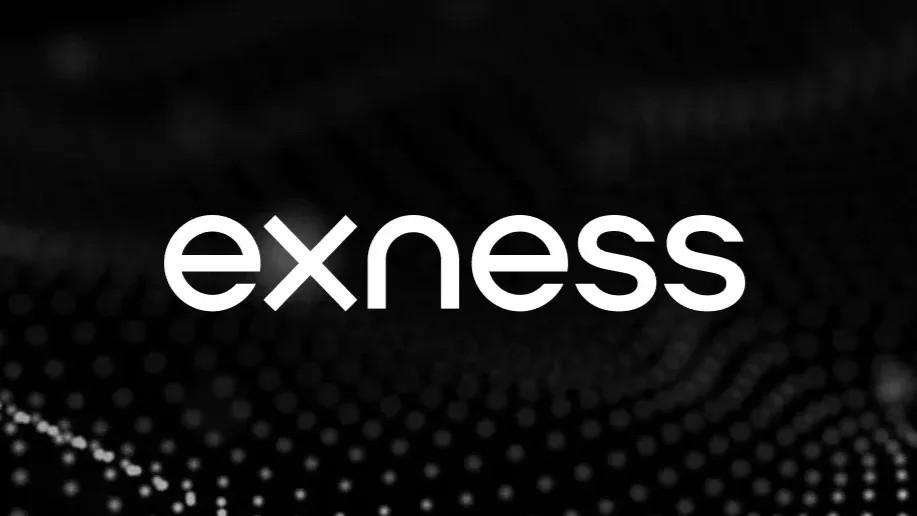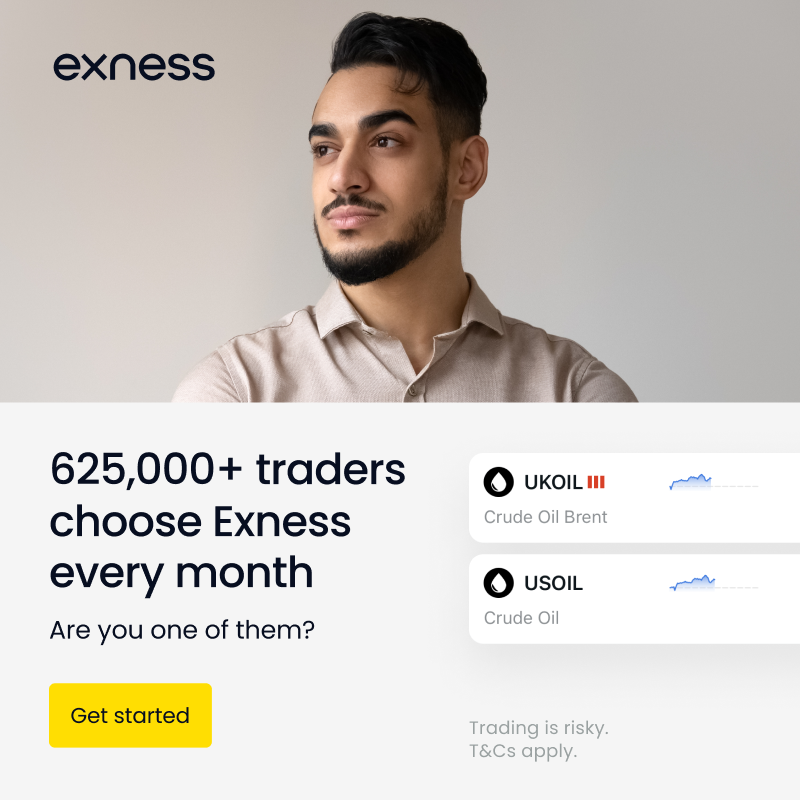
8 minute read
Exness India Account Opening: How to Create
from Exness Blog
The forex trading landscape in India has witnessed remarkable growth, fueled by increasing financial awareness and access to global markets. For Indian traders eager to tap into this dynamic world, Exness stands out as a trusted broker offering a seamless platform to trade forex, commodities, cryptocurrencies, and more. Whether you’re a beginner or an experienced trader, opening an Exness account in India is a straightforward process that unlocks a wealth of opportunities. In this detailed guide, Exness India Account Opening: How to Create, we’ll walk you through every step, explore account options, and provide actionable insights to kickstart your trading journey with confidence.

💥 Trade with Exness now: Open An Account or Visit Brokers 🏆
Why Choose Exness for Trading in India?
Before diving into the account creation process, let’s understand why Exness is a top choice for Indian traders. Founded in 2008, Exness has built a global reputation for transparency, competitive trading conditions, and cutting-edge technology. Here’s what sets it apart:
Regulation and Trust: Licensed by reputable authorities like the FCA (UK), CySEC (Cyprus), and FSCA (South Africa), Exness ensures a secure trading environment.
Low Costs: Tight spreads (starting at 0.0 pips on some accounts) and minimal fees maximize profitability.
High Leverage: Up to 1:2000, allowing traders to control larger positions with small capital.
Localized Support: 24/7 assistance in English and Hindi, plus INR funding options like UPI and net banking.
Diverse Instruments: Access to forex pairs, gold (XAU/USD), cryptocurrencies, and indices.
For Indian traders, Exness combines global expertise with local accessibility, making it an ideal platform to start trading. Now, let’s explore how to open your account.
Eligibility Criteria for Exness India Account Opening
Opening an Exness account in India requires meeting specific eligibility standards to comply with regulatory frameworks. Here’s what you need to know:
Minimum Age Requirement You must be at least 18 years old to register. This aligns with India’s legal age for financial contracts and ensures responsible trading.
Residency Status Exness accepts Indian residents, but you must confirm your country of residence during registration. Restrictions may apply based on local laws, so ensure forex trading complies with RBI guidelines.
Valid Identification You’ll need government-issued ID (e.g., Aadhaar, PAN, passport) and proof of address (e.g., utility bill, bank statement) for verification.
Agreement to Terms Accepting Exness’s terms and conditions is mandatory, outlining your rights and obligations as a trader.
Meeting these criteria ensures a smooth account setup. Let’s move to the step-by-step process.
Step-by-Step Guide to Create an Exness Account in India
Opening an Exness account is user-friendly and takes just a few minutes. Follow these steps to get started:
Step 1: Visit the Official Exness Website
Go to www.exness.com. Ensure you’re on the legitimate site (check for the padlock icon in the address bar) to avoid phishing scams. Click the “Register” or “Open Account” button, typically found in the top-right corner.
Step 2: Fill Out the Registration Form
Country: Select “India” from the dropdown menu.
Email: Enter a valid email address for account verification and communication.
Phone Number: Provide an active Indian mobile number (e.g., +91 format) for SMS verification.
Password: Create a strong password with a mix of letters, numbers, and symbols.
Confirmation: Tick the box to confirm you’re not a U.S. resident (required due to regulatory restrictions).
Click “Continue” to proceed.
Step 3: Verify Your Email and Phone
Check your inbox for a verification email from Exness. Click the link to confirm your email. You’ll also receive an SMS with a code. Enter it on the registration page to verify your phone number.
Step 4: Choose Your Account Type
Exness offers five account types tailored to different trading needs:
Standard Account: Ideal for beginners with no commissions and spreads from 0.3 pips.
Standard Cent Account: Micro-trading with cent lots, perfect for low-risk practice ($10 minimum deposit).
Pro Account: Tighter spreads (0.1 pips) and instant/market execution for experienced traders.
Raw Spread Account: Ultra-low spreads (0.0–0.7 pips) with a $7 commission per round turn.
Zero Account: Near-zero spreads (0.0–0.2 pips) for 95% of the day, with variable commissions.
For beginners in India, the Standard or Cent Account is a great starting point. Select your preferred type and proceed.
Step 5: Complete Your Profile
Log into your Personal Area (PA) using your email and password. Fill in personal details: full name, date of birth, and address. Ensure these match your ID documents.
Step 6: Verify Your Identity (KYC)
Proof of Identity (POI): Upload a clear scan or photo of your Aadhaar card, PAN card, passport, or driver’s license.
Proof of Residence (POR): Submit a recent utility bill (electricity, water) or bank statement (not older than 6 months) showing your name and address.
Tips: Use high-quality images, avoid glare, and ensure all details are legible. Exness typically verifies documents within hours, though it may take up to a day during peak times.
Step 7: Fund Your Account
Navigate to the “Deposit” section in your Personal Area.
Payment Options for India:
UPI: Fast and free, widely used in India.
Net Banking: Secure transfers from Indian banks.
Cards: Visa/MasterCard for instant deposits.
E-Wallets: Skrill, Neteller for quick funding.
Minimum Deposit: $10 for Standard/Cent accounts; $200+ for Pro/Raw Spread/Zero. Select INR as your currency to avoid conversion fees, then follow the prompts to deposit.
Step 8: Download the Trading Platform
Choose MetaTrader 4 (MT4) or MetaTrader 5 (MT5) from the Exness website or app store (available on Android/iOS). Log in using your account credentials (sent via email after verification).
Step 9: Start Trading
Explore the platform, set up charts, and place your first trade. Use the demo account (automatically created with $10,000 virtual funds) to practice before going live.
That’s it! Your Exness account is now active, and you’re ready to trade.

💥 Trade with Exness now: Open An Account or Visit Brokers 🏆
Exness Account Types: Which One Suits You?
Exness caters to diverse trading styles with its account offerings. Here’s a deeper look to help Indian traders choose:
1. Standard Account
Pros: No commissions, beginner-friendly, $10 minimum deposit.
Cons: Wider spreads (0.3–2.5 pips).
Best For: Casual traders or those new to forex.
2. Standard Cent Account
Pros: Micro-lots (1 lot = 1,000 units), low risk, $10 entry.
Cons: Limited scalability, higher spreads.
Best For: Beginners testing strategies with real money.
3. Pro Account
Pros: Tighter spreads (0.1–1.6 pips), flexible execution.
Cons: Higher minimum deposit ($200).
Best For: Intermediate traders balancing cost and performance.
4. Raw Spread Account
Pros: Ultra-low spreads, ECN-like pricing, $200 minimum.
Cons: $7 commission per round turn.
Best For: Scalpers and high-frequency traders.
5. Zero Account
Pros: Near-zero spreads, $200 minimum, precision trading.
Cons: Variable commissions ($7+ per lot).
Best For: Professionals trading large volumes.
Indian traders starting with ₹800–1,000 ($10–12) often opt for the Cent Account, while those with ₹15,000+ ($200) may prefer Pro or Raw Spread for tighter spreads.
Funding Your Exness Account in India
Exness offers tailored deposit methods for Indian traders, ensuring convenience and affordability:
UPI: Instant, no fees, supports apps like Google Pay or PhonePe.
Net Banking: Secure, processed within hours, no Exness fees (bank charges may apply).
Debit/Credit Cards: Instant deposits, widely accepted.
E-Wallets: Skrill/Neteller for fast, global transactions.
Tips for Funding:
Use INR: Avoid currency conversion losses by selecting rupees.
Check Minimums: Ensure your deposit meets the account type’s requirement.
Verify First: Full KYC is required before withdrawals, so complete it early.
Withdrawals mirror deposit methods, processed within hours, making Exness a leader in fund accessibility.
Why Indian Traders Benefit from Exness
Affordable Entry: A $10 minimum deposit (₹800–1,000) suits India’s price-sensitive market.
Local Relevance: Hindi support and INR payments streamline the experience.
Gold Trading: XAU/USD access taps into India’s cultural affinity for gold.
Evening Trading: Peak market hours (6:30 PM–9:30 PM IST) align with Indian schedules.
Education and Tools: Free webinars, economic calendars, and MT4/MT5 tools empower beginners.
Common Challenges and Solutions
Challenge 1: Verification Delays
Solution: Submit clear, high-resolution documents upfront.
Challenge 2: Funding Issues
Solution: Use UPI or net banking for reliable transactions; contact support if stuck.
Challenge 3: Choosing an Account
Solution: Start with a demo to test platforms, then pick based on capital and style.
Tips to Maximize Your Exness Experience in India
Practice with Demo: Use the $10,000 virtual balance to master MT4/MT5.
Time Trades: Focus on the London-New York overlap (6:30 PM–9:30 PM IST) for volatility.
Set Leverage Wisely: Limit to 1:100–1:500 to manage risk.
Stay Informed: Follow Exness’s economic calendar for market-moving events.
Secure Your Account: Enable two-factor authentication (2FA) via phone.
Real-World Example: Trading with Exness in India
Imagine Priya, a Mumbai-based trader, opens a Cent Account with ₹800 ($10):
Deposit: 1,000 cents via UPI.
Trade: 5 cent lots of EUR/USD (5,000 units).
Spread: 2 pips ($0.10 cost).
Gain: 20 pips ($1 profit).
Net: $0.90 after costs.
With a Standard Account (₹8,000/$100), the same trade on 1 lot yields $20 profit minus $2 spread—a clear scale-up. The Cent Account keeps Priya’s risk low as she learns.
Legal and Regulatory Considerations in India
Forex trading is legal in India under RBI guidelines, but restrictions apply:
Trade only INR-paired currencies (e.g., USD/INR) with SEBI-regulated brokers for full compliance.
Exness, an international broker, operates legally for Indian clients but isn’t SEBI-registered. Consult a financial advisor to understand tax implications on profits.
Exness’s global licenses (FCA, CySEC) ensure fund safety, offering peace of mind.
Conclusion: Start Your Exness Journey in India
Opening an Exness account in India is a gateway to global financial markets, blending affordability, flexibility, and robust support. This Exness India Account Opening: How to Create guide has equipped you with the knowledge to register, verify, fund, and trade confidently. Whether you’re starting with ₹800 on a Cent Account or scaling up to a Zero Account, Exness caters to your needs.
Ready to begin? Visit Exness.com, follow the steps, and explore the demo before going live. With the right strategy and discipline, your trading potential is limitless.
Read more:

